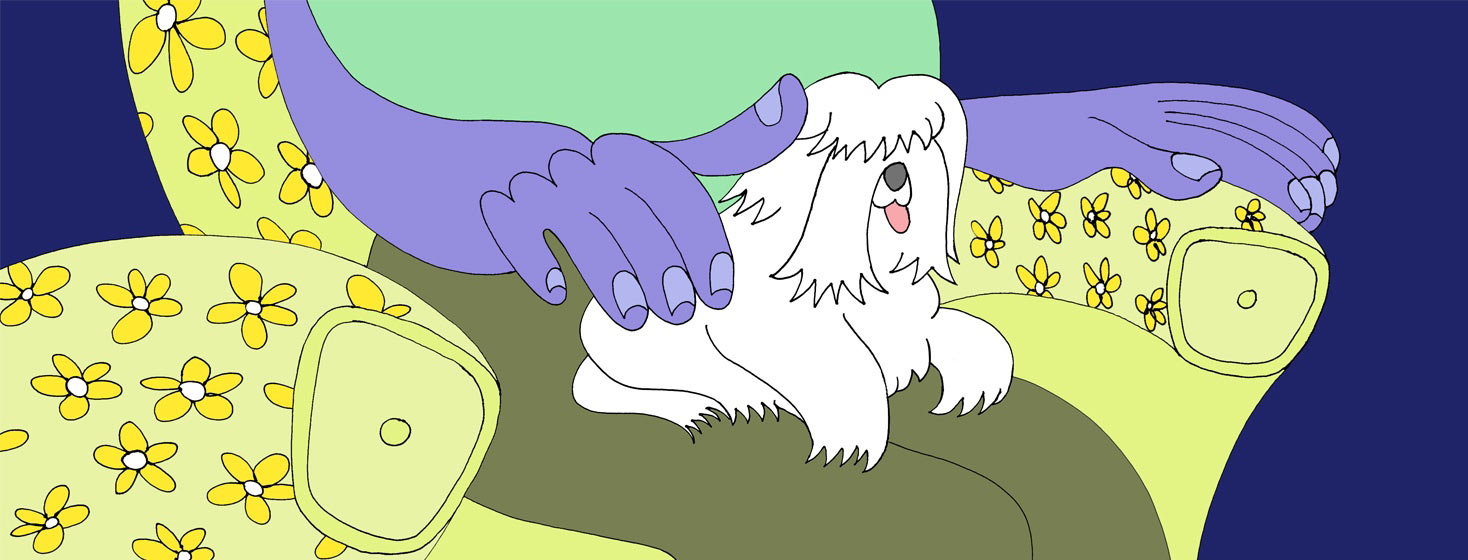The Most Expensive Prescription: A Therapy Dog for MG
Myasthenia gravis (MG) often creates sudden changes in lifestyle. People who had been constantly active find themselves trapped. Projects that would have filled long days can be exhausting, and the lure of an easy chair and old reruns can overwhelm good intentions.
That was the first discussion our new primary care doctor had when she evaluated my husband’s situation. "What do you do all day?" He didn’t want to describe Gunsmoke marathons. He should not have been surprised when she said: "Why don’t you get a dog?"
Her office was filled with birds, soft sculptures, and fish ... and if the examining room door was left ajar we were likely to see a black nose and small white body wedge himself in. Therapy dogs were a part of the treatment here.
Finding the right dog
In our married life we had always had dogs until recent years. Most were rescue dogs, and all had contributed to a lively home for our boys. But in recent years, a national responsibility had kept me constantly traveling until MG impacted our routines. We didn’t think we had space for another family member.
At the doctor’s suggestion, we put in requests at several shelters. We had special needs: low exercise, hypoallergenic, low shedding, tolerant of seniors, and our paraplegic adult son.
By the time of our next visit to the doctor, we had pretty much abandoned hope of finding one through that route. She wasn’t going to be dissuaded, though. "Try a Coton de Tulear. They are ideal; small, human-oriented, and easy to maintain."
A rare breed
We had never heard of the breed but soon learned that this was a rare dog indeed. Called the "Royal Dog of Madagascar" they are one of the few dogs that have absolutely no history of gainful employment!1
Some dogs have been bred to hunt, some to herd, some to guard. Some are shaped to look for rats in small spaces. Cotons not so much. Legend has it that they were shipwrecked near Tulear hundreds of years ago and until a few years ago enjoyed a privileged life doing tricks for local royalty!
They are named for their profuse coat of hair (to the ground in dog shows) that looks and feels like cotton.
Making the decision
Turns out there was exactly one breeder for this pricey "medicine" in our state. After a lot of debate, we made the decision and I trekked 300 miles to bring home 3 pounds of fuzz and fun.
Two years later, Gaia has still not learned any tricks (unless you count digging holes and chewing slippers.) But she is so good at climbing on Gary’s lap and falling asleep he re-named her "Snuggleupagus."
She listens to his cowboy songs (a part of his speech therapy) and reminds him when it is time for a nap (pretty much all the time.)
Emotional support and therapy dog benefits
A therapy dog is a sort of calmness exchange mechanism: "Rates of endorphins and oxytocin are higher in therapy dogs than average family pets" That’s true, of course, for their owners too. Appropriate dogs help lower blood pressure, heart rate, and stress.2
A therapy dog is not a service dog. It does not have specific jobs like sniffing drugs, fetching equipment, or monitoring traffic. Its main role is emotional support ... and not all dogs fit the bill.3
Therapy dogs should be naturally calm, friendly, and affectionate, adapting easily to new noises and smells. The American Kennel Club (AKC) has a training and testing program for potential candidates.2
Emotional support for myasthenia gravis
Turns out Gaia fit the bill perfectly. She requires minimal outside time and is most happy just being around her people. That’s not true of all Cotons. Her brother Loki has all the mischief in him the name implies and couldn’t pass an AKC test even if he cheated.
After 2 years, we can attest that the doctor knew best. In the right circumstances, a dog can be a great support for someone with myasthenia gravis.
But it is really important to consider the dog, too. A dog that needs a big yard and a lot of exercise, or whose breeding makes it wary and anxious, there should probably be a different forever home.

Join the conversation